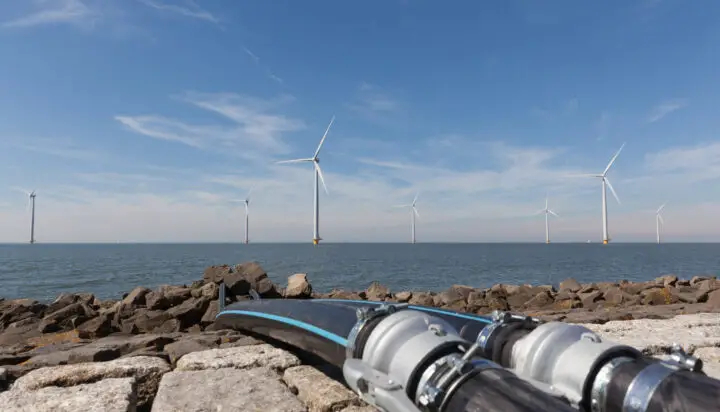The UK energy market regulator, Ofgem, has granted provisional regulatory approval for a funding package of £3.4 billion for the proposed subsea and underground 500km electricity superhighway between Scotland and Yorkshire, which could power up to 2M homes in UK. Stretching over 500 kilometers, the proposed subsea and underground infrastructure, Eastern Green Link 2 (EGL2 will be the longest ever built in Great Britain.
The Eastern Green Link 2 (EGL2) is a 525kV, 2GW high voltage direct current (HVDC) subsea transmission cable that will connect Peterhead in Aberdeenshire and Drax in North Yorkshire. Most of the cable (around 436km) will be under the North Sea while the remaining 70km buried underground onshore. It is the longest HVDC cable in the UK and the largest electricity transmission project in the country to date. The EGL2 is a joint venture between National Grid and SSEN Transmission, and is expected to cost around £4.3 billion. It is also the largest investment in electricity transmission infrastructure in Great Britain in recent years.
Designed to help harness the potential of Britain’s offshore wind power, Scotland-Yorkshire electricity superhighway is now the second project so far to proceed under Ofgem’s new fast track Accelerated Strategic Transmission Investment (ASTI) framework. Eastern Green Link 1 (EGL1), a subsea link between Scotland and England was the first ASTI project, the project received a provisional £2billion funding package earlier this month.
Accelerated Strategic Transmission Investment (ASTI) aims to expedite the implementation of crucial energy initiatives, facilitating the efficient distribution of offshore wind-generated electricity to British households. This innovative framework streamlines project funding procedures, potentially reducing the timeline by up to two years. Among the 26 projects deemed essential for achieving the Government’s ambitious goal of reaching 50GW of offshore wind capacity by 2030, EGL2 has been identified and included in Ofgem’s ASTI cohort.
Read also: UK: Liverpool unveils plans to build the world’s largest tidal power generator

Who is financing Scotland-Yorkshire electricity superhighway?
The Scotland-Yorkshire electricity superhighway project is being financed by the developers with costs later recouped through bills. To ensure consumer costs are minimized Ofgem has scrutinized the costs proposed by the developers under the ASTI process. It has identified £67 million that could be cut from indirect costs without impacting project delivery, quality and delivery time.
Projects like EGL2 will not only grant millions of consumers access to domestically produced wind energy but will also enhance grid capacity, thereby reducing compensation paid to generators who are presently required to halt production during periods of high wind due to insufficient grid capacity.
SSEN Transmission’s anticipated £2 billion investment in Scotland-Yorkshire electricity superhighway is a component of its Pathway to 2030 investments, encompassing approximately £20 billion earmarked for enhancing the electricity transmission network in northern Scotland over the next decade. Similarly, National Grid’s contribution to the project is integrated into its Great Grid Upgrade initiative, representing the most extensive grid overhaul in generations and a multi-billion-pound investment in novel electricity transmission ventures across England and Wales.
“We welcome Ofgem’s provisional decision to approve all necessary expenditure for the Eastern Green Link 2 project, a critical milestone in the final stages of the regulatory approvals process,” said Sandy Mactaggart, Director of Offshore Delivery for SSEN Transmission.
“Eastern Link 2 is the second project to reach this stage under our new Accelerated Strategic Transmission (ASTI) process which has been designed to boost Britain’s energy security by unlocking investment and speeding up the delivery of major power projects.”
She added: “However just because we’ve streamlined the approval process doesn’t mean we’re handing developers blank cheques. The ASTI framework helps ensure consumers are protected from unnecessary costs and we make budget adjustments where we don’t see maximum efficiency and benefit for consumers.”
Read also: UK’s National Grid Electricity System Operator Proposes a $74B Grid Expansion Plan
